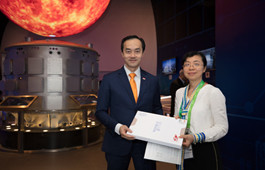Overall information
Tinghuai Kiln rose from Ruzhou, the cradle of Ru Kiln. Blessed with abundant natural resources and profound cultural accumulation, Ruzhou used to be a central area for merchants in Song Dynasty (960-1279) and its economy achieved unprecedented prosperity in the Zhenguan Golden Age (627-649). Since agate materials stored in mountains along the Ru River are suitable for making ceramics, the industry began to flourish. History can conclude that the Ruzhou pottery-making technique was the most popular and regarded technique since ancient times. Ru porcelain was exclusively produced for emperors in the late Northern Song Dynasty (960-1127). After the war between the Northern Song and Jin (1115-1234) dynasties, the art of the Ru Kiln withered away. In the 1950s, Premier Zhou Enlai instructed that the cultural relics of our country should be restored and the production of the Ru Kiln should be recovered. In 1975, Li Tinghuai, a Chinese ceramic artist, chose this magic land to embark on his dream of ceramic creativity.
Chinese ceramic artist Li Tinghuai
Li Tinghuai, born in 1952 in Ruzhou, Henan province, is a well-known Chinese ceramic artist, representative inheritor of the Ru Kiln Intangible Cultural Heritage Company (Ru Klin production) and a senior craft artist. He is a national expert having made outstanding contributions and special allowances granted by the State Council. He also serves as vice president of the International Ceramic Academy of Arts in Hong Kong and a visiting professor of art in Henan University. His 12 representative publications include New Theory of Ru Klin, Modelling of Ru Porcelain: Glaze and Appreciation, Overview of Ru Porcelain in All Ages and On the Glaze of Ru and Guan Porcelain. He has received awards for outstanding contributions to China's recovery and development of the ceramic kiln, Model Worker of Henan province, Advanced Individual Award in creative industry in Henan province and advanced individual of intangible cultural heritage protection. His works have been collected in the Louvre Museum, English Treasure Museum, Korean Mokpo Museum, Tower of Violet Light in Sea Palaces, China Ceramic Art Museum and many other ceramic museums.

 Province Events
Province Events Major Events
Major Events Highlights
Highlights
